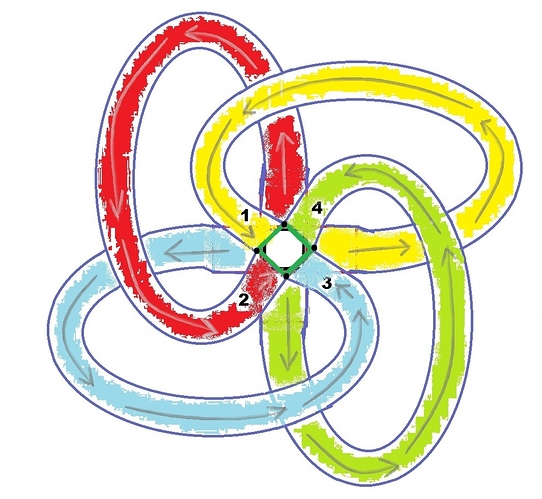I hope readers will recall this article . . .
where high-speed video of bacteria was shown as they encountered increasingly more hostile ecological factors … and dramatically showed how a whole population would pause . . . and then the bacteria would begin to advance again as individuals or groups appeared to generate enough variation that some could survive the more harsh conditions.
So I was wondering what might be shown if two different kind of conditions were varied:
instead of just an increasing gradient of antiobiotics … what if anti-biotics were one gradient, and acidity was another, perhaps? I’m no biologist, so I’m sure there are several factors to consider in such a test.
But that’s not all … what if instead of TWO populations starting … what if there were FOUR samples of the same population… and each one had to pass through a CIRCULAR course under the gaze of the camera?
Below is an example of ONE loop:
The bacteria would start in the yellow tray marked with an “X”. And it would proceed along the loop marked with an “A”. When it traversed through an increasingly more difficult environment, it would reach a partition, indicated by the thick green line.
The partition would remain in place while we waited for bacterial progression to make it through the other loops (not yet shown). Once the newly “hazed” bacterial populations had all reached the partitions, the partitions would be removed, and we would see what would happen with the COLLISION of FOUR (4) unique sub-populations of bacteria. The collision arena would be a second tray, suspended above the starting tray.
The entire apparatus of four loops would look like this:
With one or two loops dedicated to anti-biotic resistance, and the other loops dedicated to resistance to acidity, the target tray might be devoid of any antibiotic, and a benign level of acidity.
Which of these four variant populations would do better in the suddenly friendly environment? Which of the four sub-populations would be most compatible with each other?
I think this kind of research could really advance the field!!!
George Brooks
GBrooks@outlook.com

